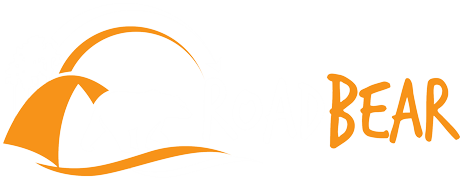VACCINATIONS
We have informed ourselves in advance at the Tropical Institute of the Inselspital Bern about possible diseases on our route and are now vaccinated against the following diseases:
- Measles / Mumps / Rubella
- Tetanus
- Diphtheria
- Polio
- Hepatitis A+B
- Yellow fever
- Rabies
TYPHOID:
Typhoid fever is a bacterial infectious disease transmitted by bacteria from contaminated drinking water and food (Salmonella typhi). Hazardous areas are Central America, South America and Africa. We received the Vivotif tablets (oral vaccination) from the Tropical Institute. Since the protection lasts only 1 year, we have to get and take the tablets again after this time. Together with antibiotic therapy or malaria prophylaxis, the oral vaccination is ineffective.
DENGUE:
Dengue fever is a viral disease transmitted by the Stegomyia mosquitoes, which are active during the day and at dusk. The disease leads to high fever, muscle and joint pain, and skin rashes. Dengue fever occurs in all tropical and subtropical areas between 35°N and 35°S latitude. Risk areas for us are all countries south from Mexico to about half of Chile / Argentina and all of Africa.
There is no vaccination or therapy against the dengue virus. The best way to protect yourself against it is with an effective mosquito repellent and long clothing during the day and especially at dusk (DEET: at least 30%).
If you are infected with the virus, there is nothing left to do but survive the disease. After that a long-lasting immunity develops.
IMPORTANT: Acetylsalicylic acid (e.g. aspirin) should be avoided as a fever-reducing medication. Paracetamol is recommended.
MALARIA:
Malaria is a parasitic disease transmitted by bites from the nocturnal Anopheles mosquitoes. There are five different types of malaria that are dangerous for humans. The most dangerous is Falciparum malaria, which can lead to death if the brain is infested. The disease mainly occurs in tropical areas. It affects Central America and parts of South America, as well as Africa. However, the risk of contracting malaria is much higher in Africa than in America.
The prevention of the disease can be achieved by a combination of various measures. Protection against mosquitoes is essential. These include mosquito repellents (DEET at least 30%), wearing long, light-colored clothing, applying insecticides containing the active ingredient permethrin to clothing and sleeping under a mosquito net. Depending on the region and length of stay in a risk area, additional medication may be necessary as a prophylaxis. As we are initially travelling in Central and South America and there is only a low risk of transmission in these countries, we have only 2 packs of Malarone with us as emergency treatment. We would only have to take the tablets in case of symptoms, but then all 12 tablets in one pack within 3 days (4 tablets at a time per day).
In case of a trip to Africa we would have to contact a doctor again and have a malaria prophylaxis prescribed.
ZIKA:
The Zika virus occurs in (sub-) tropical areas and is transmitted primarily by the diurnal Aedes mosquitoes (tiger mosquitoes). An infection is often not perceptible and harmless for healthy people. However, if infected during pregnancy, the virus can lead to deformities in the unborn child. The virus can be sexually transmitted for up to 6 months (in men) after infection. I.e. after a stay in a danger area, pregnancy should be waited for at least half a year.
The best preventive measure is effective mosquito protection, as described above. On our trip, parts of Central and South America are hazardous areas.
MOUNTAIN SICKNESS:
This disease occurs during stays at an altitude of more than 2500m. Above 4500m it occurs in up to 50% of travelers. With increasing altitude the amount of oxygen in the air decreases. In order to maintain the metabolism, the body has to acclimatise above the so-called "threshold height" of 2500m. Early signs of altitude sickness are headaches, nausea, loss of appetite, dizziness, loss of performance and sleep disorders. If these symptoms are ignored and further increased, they intensify and warning symptoms such as balance disorders, vomiting, sensitivity to light, tachycardia and shortness of breath occur.
After exceeding 2500m the following rules should be observed:
- As low a sleeping height as possible
- Daily gain in sleeping height (max. 300-500m)
- Insert an additional rest day every 1000m
- Avoid nicotine and alcohol
- Drink a lot of water
IMPORTANT: Do not use aspirin as a painkiller for headaches. This can be problematic because of its blood thinning properties. Ibuprofen is recommended and whatever helps is descending.
DRUGS
We also checked with the Tropical Institute to find out which medicines we should have with us in our travel pharmacy and, if necessary, had a certificate issued. We have completed the travel pharmacy with the help of a list from the Amavita pharmacy in Köniz.
We have the following drugs with us on our trip:
Download: ListOfDrugs.pdf
HEALTH INSURANCE
Since we are deregistered from Switzerland during our trip, our Swiss health insurance no longer applies.
For the time abroad we have chosen the foreign health insurance Hanse Merkur from Germany. This insurance can be taken out for a maximum of 5 years, but the premiums have to be paid monthly and can also be cancelled monthly. For practically the same benefits that we had in Switzerland, we now only pay 48 euros per person per month and we have a deductible of 100 euros. Another advantage of this insurance is that the insurance cover is given for a stay in Switzerland of up to 3 weeks. Accident insurance is also included in the entire insurance package.
